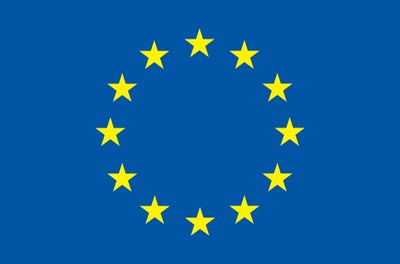Nuclear Magnetic Resonance spectroscopy (NMR) and Magnetic Resonance Imaging (MRI) play unique roles in contemporary Science, from Physics, Chemistry and Biology, to clinical research and diagnosis. Despite its irreplaceable role, further progress in NMR and MRI is hampered by sensitivities that are much lower than those of alternatives, such as mass-spec or PET. The prospects of solving this problem by “bigger machines” are uncertain and of poor return, given the high maturity already achieved by NMR/MRI. Europol challenges this status from an untapped perspective, combining NMR/MRI with Nuclear Hyperpolarization eliciting signals that surpass those currently available by up to 50,000x. Focus is placed on two particular approaches, dynamic nuclear polarization (DNP) and para-hydrogen-driven polarization (PHIP), exhibiting the highest potential for biophysical, metabolomic, pre-clinical and clinical research.
To maximize these “supersignals” Europol assembles leading experts in the physics and engineering of magnetic resonance, in the synthetic chemistry essential for the success of these methods, in the uses of NMR to structural and cell biology, and in preclinical and clinical MRI applications.
The topics covered in Europol include advanced physics, new instruments, cell biology in order to exploit NMR/MRI’s hyperpolarisation. Applications are targeted towards biophysical NMR, screening of healthy and diseased metabolomes, expanded portfolios of substrates to be targeted by in vivo MRI, ancillary in cell and system biology explorations clarifying the nature of the metabolic phenomena, and in vivo hyperpolarisation strategies in MRI. This ETN offers a broad scope, breadth and potential for synergies.
Hyperpolarisation. Despite their versatility and non-invasiveness, NMR and MRI both face major sensitivity limits associated to the extremely weak degree of alignment that the magnetic coupling imparts on the observed nuclear spins. Typically MR experiments observe at most a mere ≈10-5 fraction of all nuclei present in a studied sample. Hyperpolarisation methods seek to drastically alter this state of affairs by bringing the spins into alignment in a bulk sample, into 10s of percent. With this the sensitivity of an NMR or MRI experiment can be drastically enhanced.
Dynamic Nuclear Polarisation. DNP increases the observed signal by transferring the high degree of spin alignments characterising electrons when placed at cryogenic temperatures in high magnetic fields, onto nuclear spins dissolved in room-temperature solutions. This requires the intimate co-mixing of stable unpaired electron spins with the nuclei to be studied by NMR/MRI, an efficient cryogenic system, a microwave source capable of saturating the electron spin population at high (> 3T) magnetic fields, and a dissolution system capable of suddenly removing the spins out of their cryogenic solid polarising environment, and transforming them into a room-temperature liquid suitable for NMR/MRI scanning. The sudden, ex situ, dissolution DNP experiment resulting from this combination, is the “brain child” of one of our partners (Prof. Jan-Henrik Ardenkjær-Larsen).
Parahydrogen Induced Polarisation. A second, alternative solution to coping with NMR’s weak spin-alignment problem, is offered by PHIP. PHIP is based on exploiting the perfect anti-correlation between spin states arising in the lowest quantum rotational eigenstate of diatomic hydrogen. In this state, achievable simply by cooling H2 in the presence of a suitable catalyst, the two identical protons of the molecule are in perfect anti-alignment. The overall magnetic moment of this so-called singlet spin state is zero, leading to a molecule that is silent from an NMR/MRI perspective. However, a sudden hydrogenation reaction adding these two hydrogen atoms onto neighbouring, chemically inequivalent sites in a molecule, can transform this perfect anti-alignment into observable, 100% nuclear spin polarisations. Up to 13% of 1H polarisation has been observed in this relatively simple experiment. Still, one of PHIP’s main weaknesses stems from its requirement for a hydrogenative chemical reaction using a suitable unsaturated analogue of the substrate, to achieve the observable polarisation. This has been a substantial limitation to the analytical and biomedical uses of this approach, making it notably less general than DNP. A new approach termed SABRE (Signal Amplification by Reversible Exchange) to overcome this problem has been developed by one of Europol’s partners (University of Duckett, York) and further development is an essential part of Europol.
Europol develops various aspects and applications of hyperpolarisation and hence covers a broad spectrum from basic physics to advanced biomedical applications.
